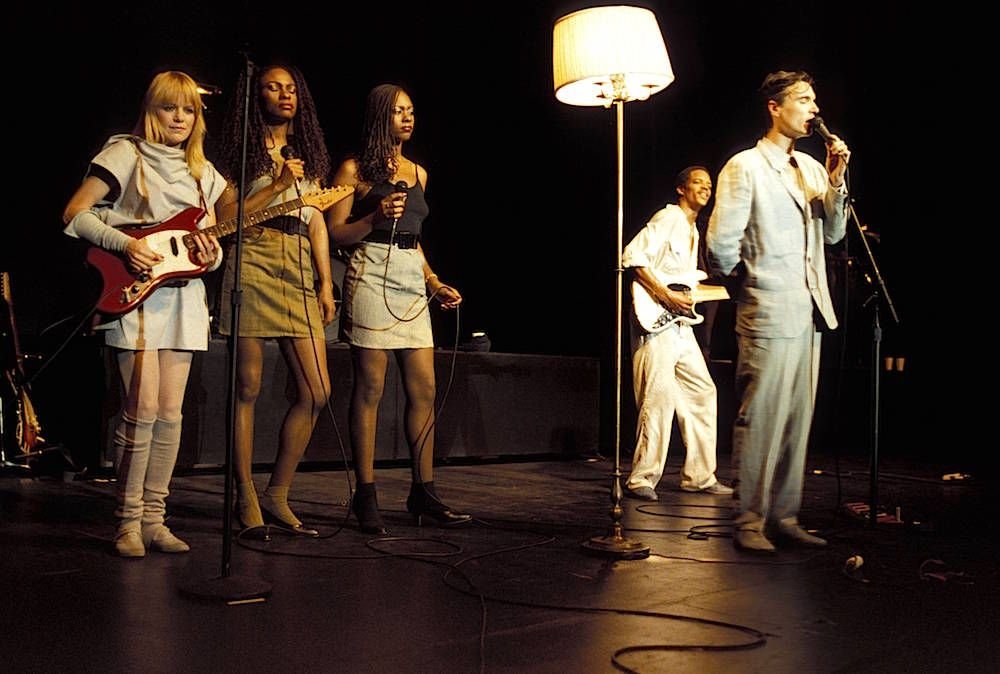SPRINGSTEEN: DELIVER ME FROM NOWHERE
Directing: B-
Acting: B+
Writing: B-
Cinematography: B
Editing: B-
Music: B-
Springsteen: Deliver Me From Nowhere is an unconventional biopic in a multitude of ways, not least of which is it’s definitively, pointedly unexciting. This is a movie about three things: the making of Bruce Springsteen’s 1982 album, Nebraska, one of the lesser-known albums of his 53-year career; depression; and childhood trauma.
This film really leans into the childhood trauma part, opening with a flashback to Bruce at 8 years old, with his parents played by Stephen Graham and Gabby Hoffman. This era of his life, always presented in black and white, is returned to consistently throughout the film. As we return to Bruce as an adult, dating a composite-character woman (Odessa Young) we never particularly care about, Springsteen is working on this album we are clearly meant to understand is informed by these childhood memories. It’s a bunch of acoustic songs, a major departure from his previous rock albums, and Springsteen is very particular about how it’s recorded, how it’s released, and how it’s marketed—which is to say, not at all.
At the end of the film, we get title cards informing us that even with no tour and no singles to support it, Nebraska still reached #3 on the album charts. It doesn’t bother to say that the album sold a million copies—an impressive number out of context to be sure, but his previous album, The River, sold five times that much; and his next album, Born in the U.S.A., sold 17 million, by far his greatest success and the 7th-best selling album of the eighties. To say that Nebraska was overshadowed by these other albums is an understatement, and it never would have sold nearly what it did without Springsteen’s other massive successes.
I had never listened to Nebraska myself. I’m listening to it literally as I write this. I have never been a Springsteen guy—I think he’s fine; he’s just not my thing—but, knowing I tend to like it when an artist does what a record executive in this film (played by David Krumholtz) calls “a folk album,” I expected to be into it. Well—it’s okay. My response to this album is about the same as my response to this film. Somewhat similarly, I noted with last year’s Bob Dylan Biopic—a far better film than this one—A Complete Unknown that I was never a Dylan guy either. I did like Timothée Chalamet’s singing performance as Bob Dylan, though; in fact I preferred that to the real Dylan. Jeremy Allen White does a pretty spot-on performance as Bruce Springsteen, including performance. But I also prefer Timothée Chalamet-as-Bob-Dylan to this.
At least A Complete Unknown, and several other music biopics before it, had moments of thrilling musical electricity. Such things are beside the point with Deliver Me From Nowhere, which is about a deeply personal album that clearly was, and clearly still is, very important to Springsteen. He was reportedly on set every day, which indicates that this film is similarly important to him. This is probably not the story most of his diehard fans would be interested in, but it’s the story he wants them to know. It’s also very drab and melancholy.
If you approach Deliver Me From Nowhere from the perspective of childhood trauma and adult depression, it becomes quite unconventional for a biopic and a fascinating examination of something rarely discussed in this context. On the other hand, the extent of this relationship with Bruce’s alcoholic father, and especially with his protective mother, is never given a great deal of depth, even with the large number of flashbacks. Most of this movie is just Bruce quietly moving through his life, recording a studio album that baffles his record label, and dwelling on these memories.
Jeremy Allen White does a very good job in the part, and Jeremy Strong gives a fine performance as his manager and friend Jon Landau, if not necessarily one that seems to justify his notorious method acting approach. Paul Walter Hauser appears as a guy helping Bruce with the recording, and Marc Maron as a studio engineer is so underused that in the first several scenes in which he appears he doesn’t even speak. At least he got to hang out and chat with Springsteen on set, seven years after Springsteen opened up about his struggles with depression on Maron’s WTF with Marc Maron podcast.
I’m all for cinematic examinations of trauma and depression, if they’re done well. They just don’t make for a very exciting music biopic, which, a bit ironically, the marketers of Bruce Springsteen: Deliver Me from Nowhere basically promised. I find myself wondering if studio executives responded to the final product of this film the way executives did to the Nebraska albums: what are we supposed to do with this? Throw it to the wall and see if it sticks, I guess.
Deliver me to something more exciting.
Overall: B-







